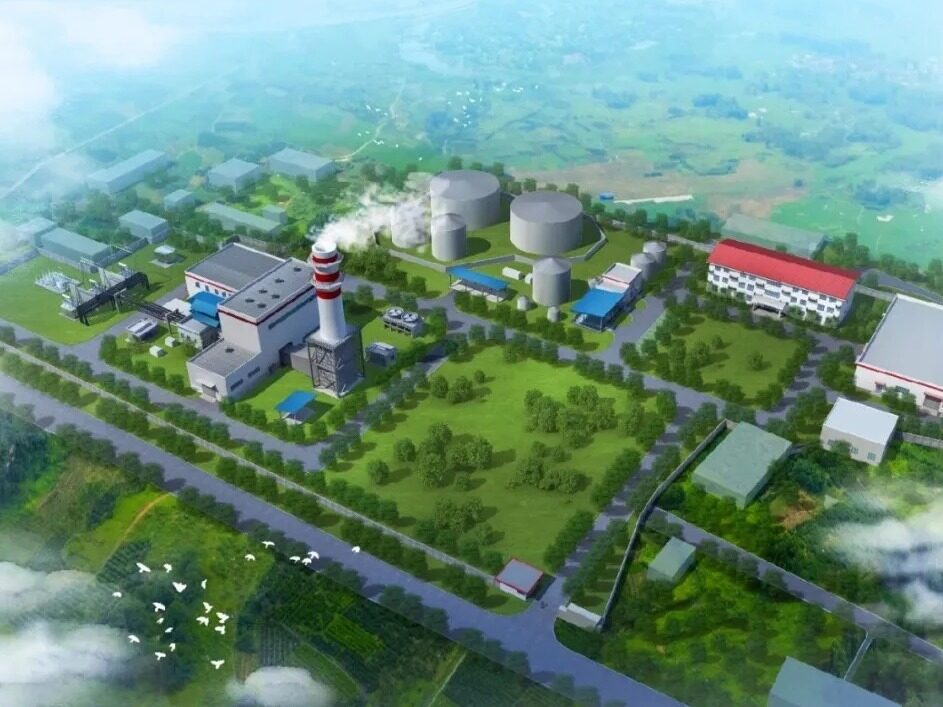- China's energy projects in Central Asia have provided many fixed jobs for local residents
- With advanced technology and experience, China has achieved fruitful results in cooperation with Central Asian countries in the field of renewable energy in recent years

As the largest inland geographical region in the world, Central Asia is rich in energy resources. The reserves of oil, natural gas, coal, uranium and other resources are among the top in the world.
However, in the context of global climate change, international geopolitical turmoil and challenges to energy security, how to improve energy efficiency and promote the development of renewable energy has become the key word of energy development in Central Asian countries in recent years.
As one of the important partners of traditional energy cooperation in Central Asia, China, with its advanced technology and experience, has also achieved fruitful results in cooperation with Central Asian countries in the field of renewable energy in recent years.
Kazakhstan's coal and oil reserves rank among the top in the world, and middling coal accounts for about 70% of electricity production.
According to the energy development strategic plan released by the Ministry of Ecology, Geology and Natural Resources of Kazakhstan in 2021, the country will achieve carbon neutrality by 2060. In this process, the proportion of renewable energy will reach 15% by 2030 and 50% by 2050.

As the largest landlocked country in the world, Kazakhstan has abundant solar, wind and hydropower to be developed. According to statistics, 12 renewable energy projects were put into operation in 2022, with a total power generation of 385 MW, up 20% year on year. In 2023, 15 renewable energy projects will be started.
In 2021, the 100-megawatt Zanatas wind power project jointly constructed and operated by China and Kazakhstan will be connected to the grid for power generation. In 2022, 30 150 MW generating units in the first phase of the northern Akmora wind power project invested and constructed by Chinese enterprises will be connected to the grid for power generation. After the full capacity is connected to the grid, the project will provide about 600 million kWh of clean power to the local area every year; The Sherek 60 MW wind power project jointly built by China and Kazakhstan has achieved grid connection. According to Buck Jiang, an employee of Sherek Wind Farm, the wind power project will greatly alleviate the power shortage in Sherek area, and also provide many fixed jobs for local residents.
Then look at Uzbekistan. As the country with the largest population in Central Asia, with the continuous development of social economy in recent years, the power supply of the country has become tense.
Uzbekistan has abundant solar and wind energy resources in a large number of regions, so the development of solar and wind power generation has become one of the priority development directions to improve the energy supply situation in the country. In 2019, the country issued the Renewable Energy Use Law, which laid a legal foundation for the country's green energy development strategy. According to its development strategic plan, Uzbekistan's share of renewable energy power generation will reach 25% by 2030.

According to the news released by the Ministry of Energy of Uzbekistan, in 2023, the country will add 2910 MW of renewable energy installations, including 3 photovoltaic power stations, 2 hydropower stations and 1 wind power station. At the end of 2022, the Uzbekistan Bukhara 1 GW wind power project contracted by China Energy Construction Corporation was officially started. The project is the largest single wind power project in Central Asia.
On February 15, 2023, the Ministry of Energy of Uzbekistan said that it would attract China Energy Construction Group to build solar power stations with a total installed capacity of 2 gigawatts in three regions in 2024.
In Tajikistan, where mountains and plateaus account for more than 90% of the total land area, there are abundant water resources. According to statistics, Tajikistan's annual hydropower reserves are 527 billion kilowatts/hour, and 98% of the total domestic power generation comes from hydropower.
In the past 30 years, Tajikistan has built and upgraded a total of 287 hydropower stations. In 2018, the first generating unit of the Rogun Hydropower Station in Tajikistan, known as the largest hydropower station in Central Asia, was connected to the grid for power generation. The second unit will be connected to the grid for power generation in 2019. The design installed capacity of Luogong Hydropower Station is 3600 MW, which is composed of six 600 MW generating units. All generating units will be completed and put into operation in 2024. The power generated by this hydropower station can be exported to neighboring Uzbekistan and Afghanistan in addition to domestic use.
The Minister of Energy and Water Resources of Tajikistan, Usmonzoda, said that Chinese enterprises had participated in the manufacturing and installation of the power transformation and distribution equipment of hydropower stations, and Chinese experts had provided relevant guidance on the site.
With the continuous development of the economy in Central Asia, solving the energy gap and achieving the goal of carbon neutrality are the most important goals of the energy development strategies of Central Asian countries in the coming decades. As a powerful country in the field of renewable energy, China's technology and experience can provide assistance for the development of renewable energy in Central Asian countries.Editor/Ma Xue
Comment
 Praise
Praise
 Collect
Collect
 Comment
Comment
 Search
Search














Write something~